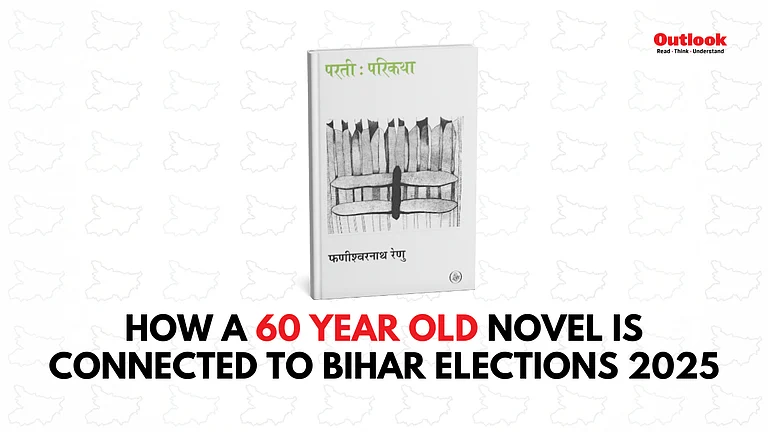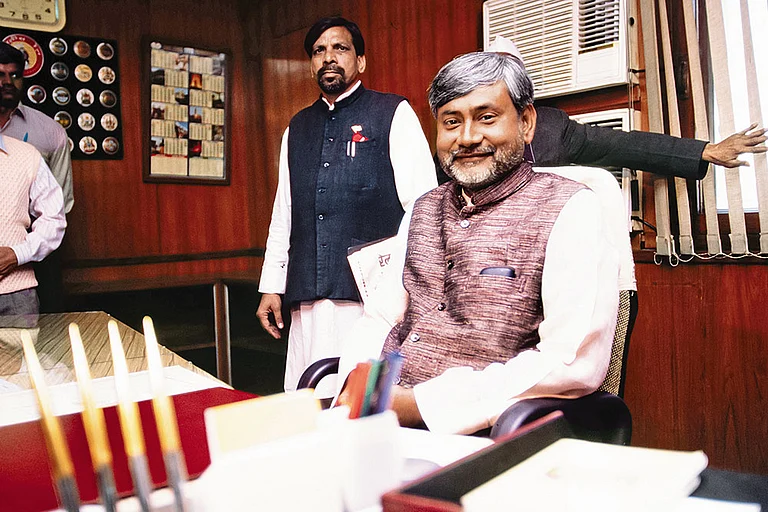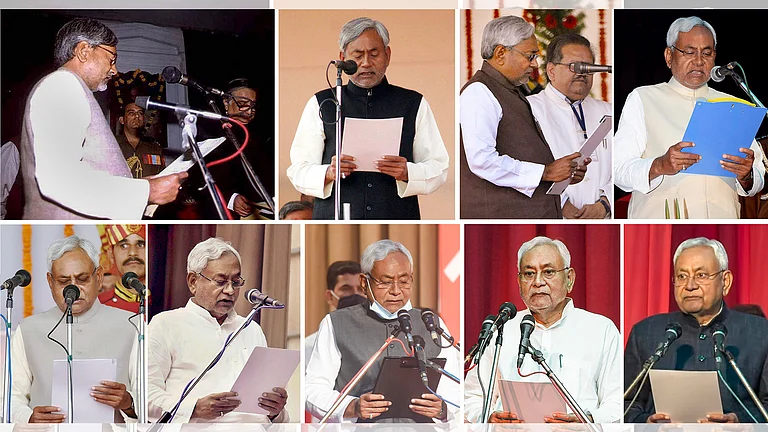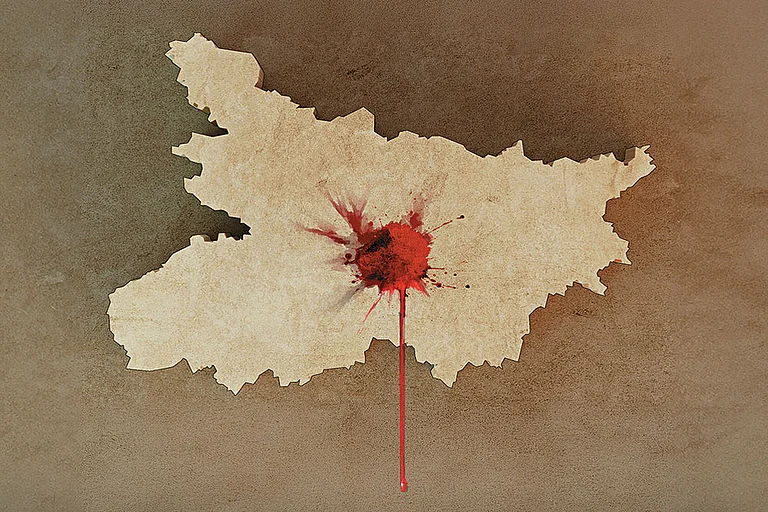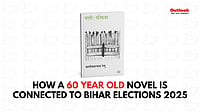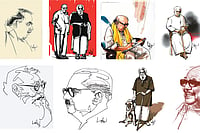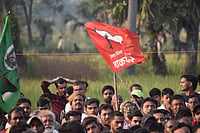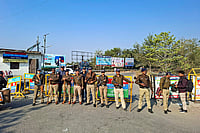
Compared to 370 candidates in the fray in 2020, Bihar had only 255 women contesting in 2025.
Observers point out that Bihar’s high male outmigration has contributed to women voting in larger numbers, as many men do not return home during elections.
There are reasons why Nitish earned women’s trust. Soon after taking office in 2005, he introduced 50 per cent reservation for women in panchayats
For years, in his numerous terms as Chief Minister of Bihar, Nitish Kumar has cultivated a women’s vote bank that cuts across caste and religious lines. This August, on election eve, in a move many dubbed a political masterstroke, he announced a one-time cash handout of Rs 10,000 to one woman in every family to start a business, with the promise of more assistance for those who used it well.
Despite this overt focus on women voters, the Left parties, a key part of the opposition alliance Mahagathbandhan, fielded only one woman among their candidates. The Communist Party of India (CPI) and the CPI(M) had none among their nine and four candidates, respectively, while the CPI(ML)(Liberation) fielded only one among its 20—Divya Gautam, a 34-year-old political greenhorn, who lost by a margin of 59,079 votes. Overall, the Left parties shared the misfortune of their alliance partners and saw their tally in the Bihar assembly fall to three from 16 in 2020.
Compared to 370 candidates in the fray in 2020, Bihar had only 255 women contesting in 2025. Of them, 29 won, with only three coming from the Opposition—all from the Rashtriya Janata Dal. Of the rest, 10 each were from the JD(U) and the BJP, three from the Hindustani Awam Morcha (Secular), two from the Lok Janshakti Party (Ram Vilas) and one from the Rashtriya Lok Morcha.
The elections not only recorded the highest ever polling percentage in Bihar at 67.13 per cent, but also the highest participation by female voters since 1951, with a polling rate of 71.78 per cent. The polling rate among male voters stood at around 63 per cent, nine percentage points lower. After the results, Prime Minister Narendra Modi said that the so-called ‘M-Y’ equation, which earlier referred to the Muslim-Yadav alliance—the bedrock of the Rashtriya Janata Dal’s social engineering strategy—now represented mahila and youth, the segments the ruling National Democratic Alliance purportedly caters to.
Yet this high participation is part of a longer trend. Bihar’s sex ratio has declined significantly—from 957 females per 1,000 males in 1971 to 918 by 2011. At the same time, women have consistently outvoted men in every assembly and Lok Sabha election since 2010. In the 2020 assembly polls, 59.85 per cent women voters turned out compared to 54.67 per cent men; in the 2024 Lok Sabha elections, 59.4 per cent of women voted against 53 per cent men.
This is especially notable in a state with one of India’s worst gender gaps in education. The 2011 Census recorded literacy at 71.2 per cent for men and only 51.5 per cent for women. The National Family Health Survey-5 (2019-21) found literacy at 76.4 per cent among men and 55 per cent among women aged 15-49.
Observers point out that Bihar’s high male outmigration has contributed to women voting in larger numbers, as many men do not return home during elections. As a result, women’s choices have emerged as a decisive factor in Bihar’s electoral outcomes.
Compared to 370 candidates in the fray in 2020, Bihar had only 255 women contesting in 2025. Of them, 29 won, with only three coming from the Opposition.
It’s against this backdrop that the 2025 Bihar numbers look stark. Women voted at 71.78 per cent against 62.8 per cent for men, with over 2.5 crore shaping the mandate. Yet parties fielded only 255 women from more than 2,600 candidates, the lowest in fifteen years. Only 29 women won, keeping women’s representation under ten per cent. Even parties claiming to champion women offered little beyond tokenism: Bahujan Samaj Party (BSP) 26, Jan Suraaj 25, RJD 23, BJP and JD(U) 13 each and Congress five.
So, did the lack of women candidates dent the Left? Bihar’s leftist leaders disagree. They point out that the JD(U) fielded fewer female candidates than it did in 2020 and that, in the 2025 list, the RJD had the highest share of female candidates among the key parties. Yet the JD(U) delivered a spectacular performance, increasing its tally from 43 seats in 2020 to 86 85 this time.
“Fewer women candidates in the 2025 election did not result in a lower women polling percentage; rather, women voted all the more,” says a CPI leader from Bihar who did not want to be identified, as the party is yet to complete its assessment of the electoral outcome. His argument is that the lack of women candidates was not a notable factor influencing women’s voting. “Women do not vote for someone just because she is a woman,” he said.
According to Patna-based journalist and social activist Nivedita Jha, Nitish’s Rs 10,000 direct cash transfer to women and the Opposition’s promise of a monthly Rs 2,500 allowance and jobs for women show how important women’s choices have become in determining electoral outcomes in Bihar. Yet this trend does not reflect when it comes to candidature.
“The poor share of female candidates shows the Left parties still do not believe women can win elections,” she says, adding that the Left parties agree in principle on the need for greater women’s representation in the legislatures and Parliament, but act little differently from other parties when it comes to fielding candidates.
There are reasons why Nitish earned women’s trust. Soon after taking office in 2005, he introduced 50 per cent reservation for women in panchayats. In 2016, he brought in a 35 per cent quota for women in state government jobs; in July 2024, his government restricted this quota to Bihar domiciles, reflecting demands for domicile-based job reservations.
Another key plank of Nitish’s appeal among women was the statewide liquor ban, widely supported by women frustrated with alcohol-related violence. Security remained among their top concerns.
Jha points out that women in Bihar lag behind men in the state, and women in other parts of India, in areas such as education and income. Yet there are many villages where only women, children and the elderly live for most of the year as the men migrate for work. As a result, women have been working both at home and outside. They are taking decisions on family matters and determining who is the suitable electoral candidate.
“When it comes to daily life, women have been playing a far greater role than a couple of decades ago. Women have certainly been more aware and empowered, but that does not change the scene over candidature,” says Jha.
Asked if fielding few women candidates is due to the lack of winnability of women politicians, CPI(ML)(Liberation) general secretary Dipankar Bhattacharya disagreed. “It’s not about the winnability of women candidates, it’s about finding the right local candidate for every constituency. In our case, the best local choice for our share of seats turned out to be men,” he told Outlook. Bhattacharya said the party could have fielded more women candidates had they been allotted a higher share of Opposition alliance seats.
But why could the Left not find suitable women candidates within their own quota of seats? Should they not practise what they preach on reservation for women’s representation? Bhattacharya said that implementing reservations within the party, without similar practice among other parties, does not work in the electoral system.
“This is why we want reservations for women in assemblies and Parliament. When the government makes it legally binding, everybody will have to follow. Certain seats will get reserved for women. Until then, it’s about finding the right candidate for every constituency to ensure the party’s representation in the legislatures,” he says.
In 2023, the Modi government got the Women’s Reservation Bill passed in Parliament. It seeks to reserve one-third of the total number of seats in the Lok Sabha and state legislative assemblies for women, but postpones its implementation until the next delimitation of parliamentary and assembly constituencies, which can take place only after the results of the latest census are released.
Some Left leaders say they raised real issues affecting women, including job-related migration that separates women from their sons, brothers and sisters, and better pay and security for Aasha and Jeevika workers. However, they argue that the election was fought on different equations, where caste- and religion-based polarisation drowned out these issues, while the poll panel allegedly aided the ruling coalition.
They also point to the Election Commission’s extensive deployment of Jeevika workers in the poll process. “Jeevika Didis” are the roughly 1.4 crore women affiliated to the state’s 1,144,421 self-help groups. “It’s through the Jeevika scheme that the one-time cash disbursement happened at the hour of election. It’s anybody’s guess who the Jeevika Didis may have preferred,” says a CPI(ML) (Liberation) leader.
Jha argues that one reason the Left fields even fewer female candidates than other parties is that the current political scenario, dominated by money and muscle power, makes it very difficult for women to contest high-stakes elections.
“The very few women currently visible in the political scene are all relatives of some powerful men,” she said, adding, “Women working at the grassroots or who have their own identity hardly have any place.”
CPI(M) politburo member Mohammad Salim, however, believes the Left needs to address this question self-critically. “We speak for women, we organise them, but there has remained an undeniable gap in their representation in party leadership as well as candidature,” he says, adding, “We need to more actively recruit and retain women and promote their representation in leadership positions.”
He feels that the lack of women in the Left parties’ candidate list in Bihar may have turned out to be “somewhat deadly”. At a time when the JD(U) and BJP-led NDA carried out campaigns focused on women, the Left parties failed to properly address women’s issues. “We need to analyse, understand and learn lessons.”
MORE FROM THIS ISSUE
Snigdhendu Bhattacharya is a journalist, author and researcher
This article appeared as 'No Woman’s Land' in Outlook’s December 1, 2025 issue as 'The Burden of Bihar' which explores how the latest election results tell their own story of continuity and aspiration, and the new government inherits a mandate weighted with expectations. The issue reveals how politics, people, and power intersect in ways that shape who we are—and where we go next.







